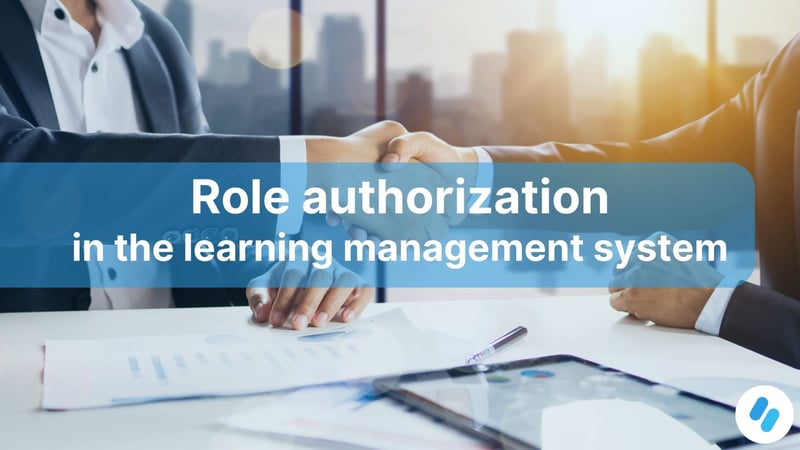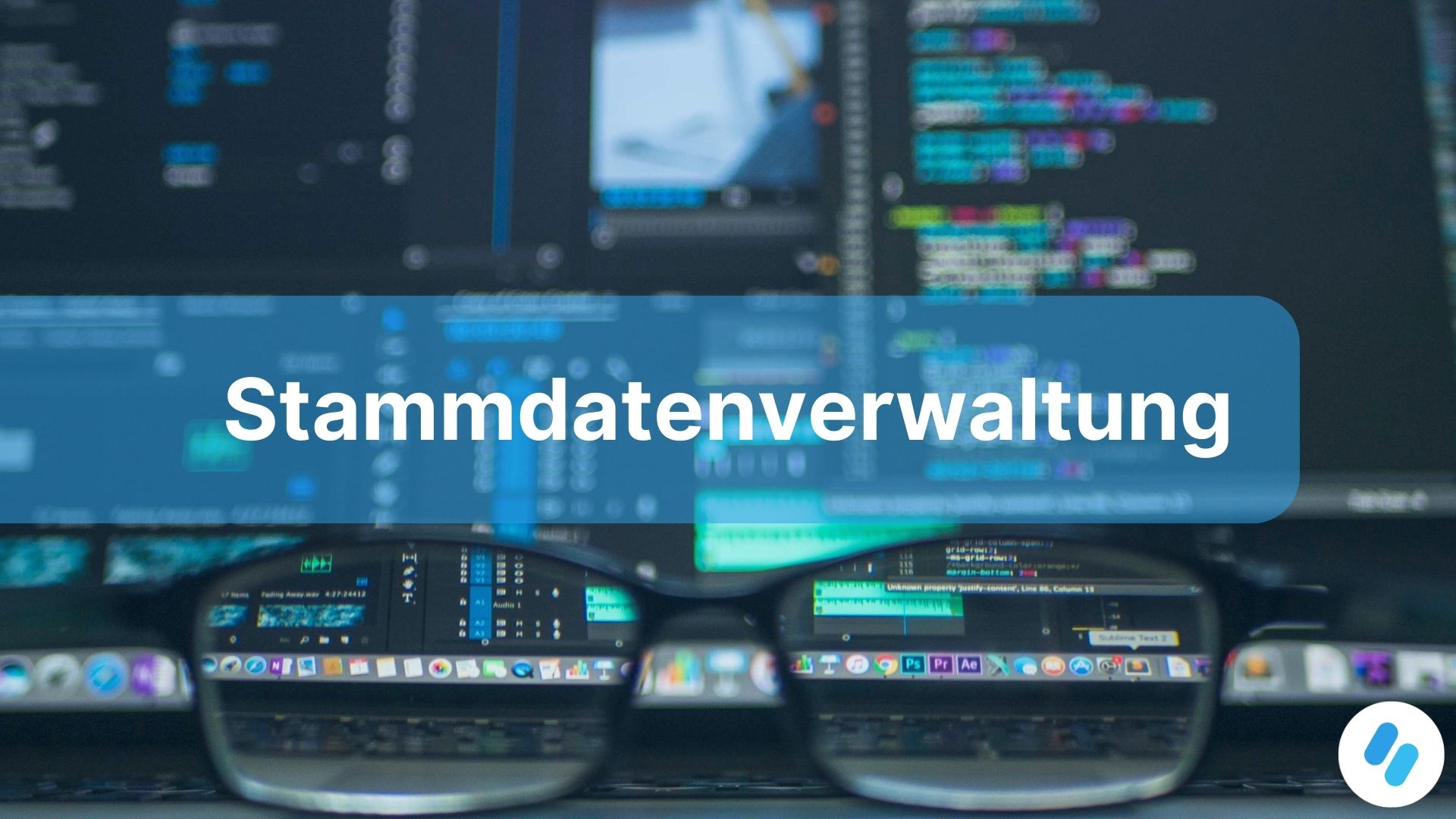Are you looking for an efficient and flexible solution for your learning management? Then you...
Beginner to professional: How to master role authorization in the LMS
Ready for the keys to power? Discover how to stay in control with the right user permissions in digital learning environments such as U2D Semiro and other LMS systems. Expand your knowledge of new rights, functions and roles to operate more effectively in adult education. Immerse yourself in the many ways to manage information and courses: Welcome to the world of learning management, where you can set the rules - thanks to role authorization in the system.

Are you ready to take control?
Role authorization in learning management
Role authorizations play a crucial role in the world of digital learning. Clearly assigning authorizations for different users in the system ensures that all employees can perform their tasks effectively. This is not just about creating courses or managing information, but also about the targeted management of the learning process.
With a well-structured role system, you can ensure that everyone involved has the right rights and functions to learn and teach successfully. A clear distribution of roles in the LMS not only promotes efficiency, but also the motivation of participants in the e-learning environment. By familiarizing yourself with the different roles and their tasks, you lay the foundation for successful collaboration in the field of digital learning management.
Role authorization in learning management refers to the different levels or authorizations that users have within a learning management system (LMS). These authorizations define which actions users can perform within the system and which data they are allowed to view or change. The importance of role authorization lies in various aspects:
-
Access control: Role authorizations are used to control access to various functions and content of the LMS. This makes it possible to ensure that users can only access the information that is relevant to their respective role.
-
Management of user groups: By assigning roles, administrators can create and manage user groups to which specific authorizations are assigned. This makes it easier to manage large user groups and helps to organize the learning environment.
-
Personalization and customization: Role permissions make it possible to adapt the LMS to the specific requirements of an organization. Different users can have different roles that correspond to their respective tasks and responsibilities.
-
Efficient collaboration: By clearly defining roles, users can collaborate efficiently as they know exactly what actions they can perform within the system. This contributes to efficiency and productivity.
-
Security and data protection: Role authorizations play an important role in security and data protection in the LMS. By only assigning certain permissions to authorized users, the risk of data misuse or unauthorized access is minimized.
Different roles in learning management and their tasks
Roles play a central role in a digital learning management system such as U2D Semiro. Different users have specific authorizations and tasks that ensure the smooth functioning of the system. From administrators, who can create new courses, to tutors, who support the learning process, all roles contribute to the effective management of e-learning.
The clear assignment of rights and functions ensures the orderly management of learning content and media within the system. By precisely defining roles, information can be made accessible in a targeted manner and the quality of adult education can be improved. Each role in the system has its own important role in creating an efficient learning environment and meeting individual learning needs.
Learning management
There are various roles in learning management, each of which has specific tasks and responsibilities. Here are some of the most common roles and their tasks:
-
Learning Manager / Learning Coordinator:
- Planning and organizing learning activities and resources
- Administration of the learning management system (LMS) or other educational platforms
- Coordination of teachers, trainers and other learning experts
- Monitoring learner progress and performance
- Communicating with learners and other people involved
-
Trainer / lecturer:
- Development of curricula, course materials and learning content
- Conducting courses, lectures, workshops or training sessions
- Support and supervision of learners during the learning process
- Assessment of learning outcomes and performance
- Adapting the teaching approach based on the needs of the learners
-
Technical support / IT administrators:
- Setting up and maintaining the learning management system or other educational platforms
- Support with technical problems and inquiries from learners and teachers
- Ensuring the availability and functionality of learning resources and tools
- Integration of additional functions or extensions into the LMS
-
Learning advisor / tutor:
- Individual supervision and support of learners
- Provision of additional resources, explanations and assistance in case of difficulties
- Promoting self-learning skills and strategies
- Provide feedback and motivation to increase learning progress
-
Quality assurance / evaluation officer and evaluator:
- Monitoring the quality of learning content, methods and outcomes
- Assessment and improvement of learning materials and processes
- Conducting evaluations, surveys or tests to assess the quality of learning
- Developing guidelines and standards for learning management
-
Administrator:
- Managing user accounts and access rights in the LMS
- Control of budgets and resources for learning management
- Coordination of training and further education programs for teachers and employees
- Compliance with data protection and security guidelines in connection with learning activities
These roles may vary depending on the organization and educational institution and can also be performed by the same person in smaller teams or institutions.

Learning management system
A learning management system (LMS) offers different roles with different tasks. The exact names and functions may vary depending on the specific LMS, but here are some common roles and their typical tasks:
-
Administrator:
- Setting up and configuring the LMS
- User management, including creating, deleting and editing user accounts
- Managing courses and content, including uploading materials and setting access rights
- Configuration of reporting functions and other administrative settings
- Troubleshooting technical problems and supporting users
-
Instructor / course leader:
- Creation of courses and learning content
- Planning learning activities and assigning tasks
- Monitoring learner progress and grading assignments or tests
- Interacting with learners through discussion forums, chats or virtual classrooms
- Providing feedback and support to learners
-
Learner:
- Registration and participation in courses
- Access to learning materials such as texts, videos, presentations, etc.
- Participation in discussion forums, chats and other communication channels
- Completing tasks, tests and other assessments
- Checking your own learning progress and providing feedback to course instructors or administrators if necessary
-
Guest user:
- May have limited access to certain parts of the LMS, usually without the ability to complete courses or receive assessments
- May be used to demonstrate LMS features or exchange information with potential users
The roles and their specific tasks may vary depending on the requirements of the educational institution or organization using the LMS. Some LMS also offer the possibility to create custom roles to meet specific needs.
Advantages of a clear distribution of roles in the learning process
A clear allocation of roles in the learning process offers numerous advantages for everyone involved. By precisely assigning role authorizations in the learning management system, users can work more efficiently and focus on their specific tasks. This promotes a structured and targeted approach to creating and managing course content and providing information.
Especially in digital adult education and e-learning, clear roles and rights are essential to ensure smooth management. A well-thought-out role structure makes it possible to assign functions in a targeted manner and optimize collaboration between the various stakeholders. This not only increases efficiency, but also improves the overall quality of the learning process. With a well-organized role system, you can exploit the full potential of your learning management system and create tailor-made learning experiences.
A clear allocation of roles in the learning process brings with it a number of benefits that help to promote learning success:
-
Clear responsibilities: A clear allocation of roles clearly defines the tasks and responsibilities of all participants in the learning process. This reduces confusion and misunderstandings about who is responsible for which aspects of learning.
-
Efficient collaboration: By assigning specific roles to all participants, collaboration in the learning process can be made more efficient. Each person can focus on their assigned tasks, resulting in a smoother learning experience.
-
Promoting engagement: A clear allocation of roles can increase participants' engagement in the learning process as they know exactly what is expected of them and how they can contribute to the overall success of the learning.
-
Optimizing the use of resources: By assigning specific roles, resources can be used more efficiently. All participants can access the materials, tools and support relevant to their roles in the learning process without wasting time on irrelevant tasks.
-
Promoting autonomy: A clear allocation of roles allows participants to gain more autonomy over their own learning process. By setting clear expectations and letting participants know what their role is, they can plan better and pursue their learning goals independently.
-
Support for differentiated learning needs: By assigning different roles, different learning needs and styles can be better accommodated. For example, group work and peer feedback can help participants with different learning preferences to benefit from each other.
Overall, a clear division of roles helps to make the learning process more effective, increase participant engagement and better support individual needs. This leads to an overall more positive learning experience and better learning success.
Tips for setting up and customizing roles in the learning management system
Discover effective strategies for the optimal configuration and customization of roles in your learning management system. Through targeted settings, you can precisely define user authorizations and thus improve the use of digital learning resources. Ensure that users are only given the appropriate rights to create courses, share information or use other functions of the system.
A clear assignment of roles not only promotes smooth processes in the e-learning sector, but also in adult education. Use LMS platforms such as U2D Semiro to effectively integrate new media and increase the quality of learning in the company.
When setting up and adapting roles in a learning management system (LMS), it is important to create a clear structure that meets the needs of the users and the goals of the organization. Here are some tips for setting up and customizing roles in the LMS:
- Conduct a needs analysis: Begin with a thorough needs analysis to understand the users' requirements as well as the organization's goals and policies. Identify the different user groups and their specific roles and responsibilities in the learning process.
- Establish role definitions: Define clear roles and responsibilities for each user group. Ensure that each role has specific tasks, authorizations and access rights that match the respective responsibilities.
- Identify standard roles: Identify standard roles that are present in most LMS applications, such as administrator, lecturer, tutor and student. These roles serve as the basis for further customization to meet the specific requirements of your organization.
- Define additional roles: Consider the individual requirements of your organization and define additional roles if necessary. This could include roles such as course instructor, course coordinator, mentor or technical support, depending on the specific needs and structures of your organization.
- Assign authorizations: Assign permissions based on the defined roles. Ensure that permissions are appropriate and allow users to perform their tasks effectively without giving them unnecessary access to sensitive data or functions.
- Create custom roles: Some LMS platforms offer the ability to create custom roles that are specific to your organization's needs. Use this feature to customize roles and create new ones that meet your exact needs.
- Regular review and customization: Regularly review roles and permissions in the LMS to ensure they meet current requirements. If necessary, adjust roles or add new ones to reflect changes in requirements or organizational structure.
- Train administrators and users: Train administrators and other users who manage or use roles in the LMS to ensure they understand and can use the roles and permissions effectively.
By following these tips, you can effectively set up and customize roles in the learning management system to meet the needs of your organization and ensure smooth operation of the LMS.

The role of "administrator" in the administration of authorizations in the LMS
Administrators play a crucial role in managing authorizations in the learning management system. By cleverly assigning roles and rights, they ensure that the system functions smoothly. As the person responsible for the digital education platform, they always maintain an overview of the various users and their functions. Here are some specific tasks and responsibilities of administrators in relation to managing authorizations in the LMS:
-
Setting up user accounts: Administrators are responsible for setting up user accounts in the LMS. This includes assigning user names, passwords and other relevant information as well as assigning roles and authorizations.
-
Definition of roles and authorizations: Administrators define the various roles in the LMS and determine which authorizations are assigned to each role. This includes defining access rights to course content, administrative functions, communication tools and other system functions.
-
Assignment of authorizations: Administrators assign the appropriate roles and permissions to users based on their roles, responsibilities and positions within the organization. This can be done through manual assignment or automated processes, depending on the capabilities of the LMS.
-
Review and update permissions: Administrators regularly review user permissions and adjust them as necessary. This may be necessary to reflect changes in the roles or responsibilities of users or organizational adjustments.
-
Training and support for users: Administrators provide training and support for users to ensure that they understand and can effectively use the permissions in the LMS. This may include providing training materials, FAQ documents or direct support with questions or problems.
-
Security and privacy: Administrators are responsible for security and privacy in the LMS and ensure that permissions are configured appropriately to prevent unauthorized access to sensitive data and ensure compliance with applicable privacy regulations.
-
Monitoring and logging: Administrators monitor the use of the LMS and log activities in connection with authorizations in order to identify possible security breaches or unusual activities and respond appropriately.
Overall, administrators play a central role in managing permissions in the learning management system by ensuring that users have appropriate access, security is guaranteed and compliance with guidelines and regulations is ensured.
How can a clear assignment of responsibilities improve collaboration?
A clear assignment of responsibilities within the learning management system is crucial for effective collaboration. By defining and assigning clear role authorizations, you create transparency and efficiency in your digital learning environments.
The correct distribution of rights and functions among users not only makes it easier to create and manage courses, but also promotes a smooth e-learning experience. By using modern LMS systems such as U2D Semiro, you can integrate new media and take adult education to a higher level. A well thought-out role structure allows information to flow in a targeted manner and ensures optimal use of the platform.
When responsibilities are clearly defined, team members know exactly who is responsible for which tasks. This avoids duplication of work, as there is no overlapping of tasks.
Clear responsibilities facilitate communication within the team, as team members know who to contact if they have questions or need support. This leads to more efficient communication and a smoother exchange of information.
A clear assignment of responsibilities enables the team to plan and organize tasks better. Each team member knows exactly what tasks they have to do and can plan accordingly to ensure that all tasks are completed on time.
By clearly defining responsibilities, team members feel more accountable for their tasks. They know exactly what is expected of them and are therefore more motivated to actively participate in the collaboration and contribute to the team's success.
A clear assignment of responsibilities reduces the risk of conflicts and misunderstandings within the team. As roles and responsibilities are clearly defined, there is less room for interpretation or misunderstanding about who is responsible for which tasks.
Overall, a clear allocation of responsibilities leads to improved efficiency and productivity within the team. By avoiding duplication of work, more efficient communication and better planning, tasks can be completed faster and more effectively.
Conclusion: Take control of your education platform!
The effective administration of roles and authorizations in learning management is a decisive factor for the success of digital learning environments. The clear allocation of responsibilities enables everyone involved to perform their tasks efficiently and contribute to the smooth running of the learning process.
A well thought-out allocation of roles in the LMS is crucial as it ensures that the right people can perform the right tasks. This enables efficient management of course content, resources and communication within the learning environment. By defining clear roles, participants know exactly what is expected of them and what their responsibilities are.
The clear definition of roles and authorizations not only promotes efficiency, but also the motivation of participants. If everyone knows exactly what role they play within the system and what tasks are assigned to them, they feel better integrated into the learning environment and are more motivated to actively participate in the learning process.
A well-structured distribution of roles also helps to improve collaboration within the team. By defining clear responsibilities, duplication of work is avoided and communication within the team is improved. Each team member knows exactly who to contact if they have questions or need support, which leads to a smoother exchange of information.
In addition, a clear allocation of roles reduces the risk of conflicts and misunderstandings within the team. When the roles and responsibilities of each team member are clearly defined, there is less room for interpretation or misunderstanding about who is responsible for which tasks.
To ensure effective role allocation in learning management, it is important to clearly understand the different roles and their responsibilities. When setting up and customizing roles in an LMS such as U2D Semiro, some best practices should be followed. These include a thorough needs analysis to understand user requirements and organizational goals, defining clear roles and permissions, regularly reviewing and updating permissions, and training administrators and users.
Lay the foundations for successful learning management in your company today and secure a webinar slot with our U2D Semiro expert!
Related topics


Looking for a solution to the challenges of master data administration in learning management?...

Looking for efficient resource management? In this blog article, you will gain insights into the...
